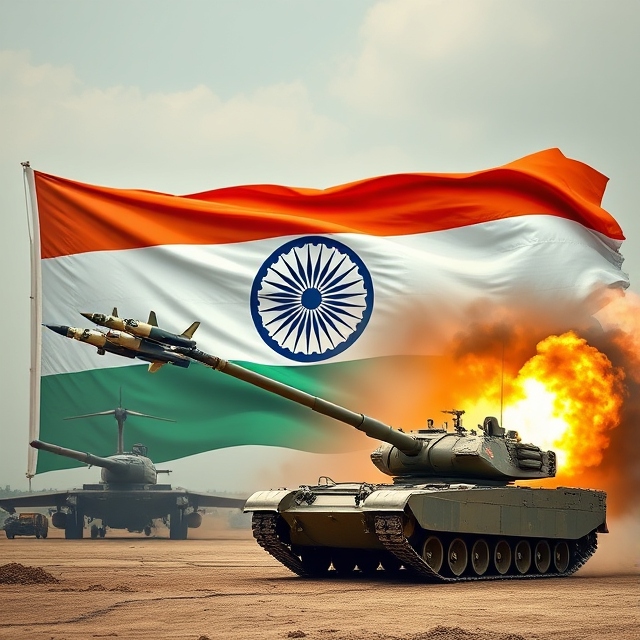
Cost-Effective Asymmetrical Weapons: India should prioritize investing in low-cost, easily mass-produced asymmetrical weapons, such as drones and guided systems, to counter budget constraints while maintaining tactical advantages.
Lessons from Modern Conflicts: The effectiveness of asymmetrical warfare, as demonstrated by Hamas and the Houthis, underscores the potential of simple yet impactful technologies against advanced adversaries.
Strategic Advantage: Investing in asymmetrical weapons can provide India a significant edge in modern conflicts, balancing affordability with adaptability to dynamic geopolitical challenges.
If India is not in a position to increase the defense budget for its armed forces, it is time to seriously explore developing low-cost asymmetrical weapons that can be mass-produced, offering better opportunity costs. While advanced weapons platforms are irreplaceable, asymmetrical weapons, which are simpler to produce, offer a strategic advantage due to differences in technology, strategy, and costs.
The Relevance of Asymmetrical Warfare
Asymmetrical warfare employs unconventional strategies and weapons often used by non-state actors or smaller military groups to counter more technologically advanced forces. The October 7 terror attack carried out by Hamas serves as a global wake-up call. Hamas exploited the weaknesses of a stronger opponent by using asymmetrical weapons like homemade or modified rockets and missiles, along with commercially available drones adapted for reconnaissance or attacks.
The cost involved in these tactics is negligible compared to Israel’s expenditures in its ongoing Gaza offensive. Hamas relied on easily available materials and simpler technology that are cost-effective and maintainable for groups with limited resources.
In contrast, Israel’s extensive military operations involve precision-guided weapons designed to minimize civilian casualties but come at a high financial burden. The mobilization and maintenance of advanced military forces significantly strain Israel’s economy and infrastructure.
Advanced Weapons vs. Asymmetrical Weapons

Advanced Weapons:
Advanced weapons represent high-tech military systems primarily used by state actors. These include:
- Precision-Guided Munitions (PGMs): Missiles and bombs with advanced guidance systems.
- Combat Aircraft: Sophisticated fighter jets and bombers.
- Cyber Warfare Systems: Designed for espionage and disruption.
- Electronic Warfare Systems: To counter enemy communications and radar.
Costs:
- High development and production costs due to advanced technology and materials.
- Significant infrastructure and expertise required for operation and maintenance.
Asymmetrical Weapons:
In contrast, groups like Hamas and Hezbollah rely on cheaper, accessible alternatives. For example, the Houthis in Yemen effectively use drones like the Sammad-2, Sammad-3, and Qasef-2K to conduct long-range attacks. These weapons extend their reach and disrupt enemy operations at a fraction of the cost of advanced weaponry.

India, however, continues to face challenges in developing its indigenous Rustom drones, highlighting the need for a focused investment in cost-effective systems.
Cost Comparison:
- Houthi Drones: Cost thousands to tens of thousands of dollars.
- Advanced Military Drones (e.g., MQ-9 Reaper): Cost about $16 million per unit, excluding operational expenses.
Strategic Impact of Asymmetrical Warfare
Despite their simplicity, asymmetrical weapons enable non-state actors to:
- Extend operational reach beyond traditional ranges.
- Gather intelligence through effective reconnaissance.
- Launch surprise attacks on critical infrastructure and installations.
The Houthis, for instance, have successfully shot down seven MQ-9 Reaper drones, incurring minimal costs compared to the hundreds of millions of dollars spent on these advanced systems.
Lessons for India
India has long been a victim of asymmetrical warfare, yet its defense strategy still heavily leans toward advanced systems. The U.S.’s approval of 31 MQ-9B armed drones for India at an estimated $3.99 billion highlights the economic strain such acquisitions impose. Instead, India should pivot toward investing in asymmetrical weapons equipped with advanced features like better guidance systems.
Historical Context:
The Stinger missiles used in Afghanistan inflicted heavy economic losses on the Soviet Union, showcasing the cost-effectiveness of asymmetrical strategies.
Conclusion
India’s unique geopolitical position demands innovative defense solutions. If increasing the defense budget is not feasible, investment in low-cost, advanced asymmetrical weapons offers an economically sustainable way forward. Such investments can provide significant tactical advantages while being cost-effective in the long term, ensuring India remains prepared for modern conflict dynamics.
Balaji is a freelance writer with an MA in History and Political science and has published articles on defence and strategic affairs and book reviews. He tweets @LaxmanShriram78. Views expressed are the author’s own.
